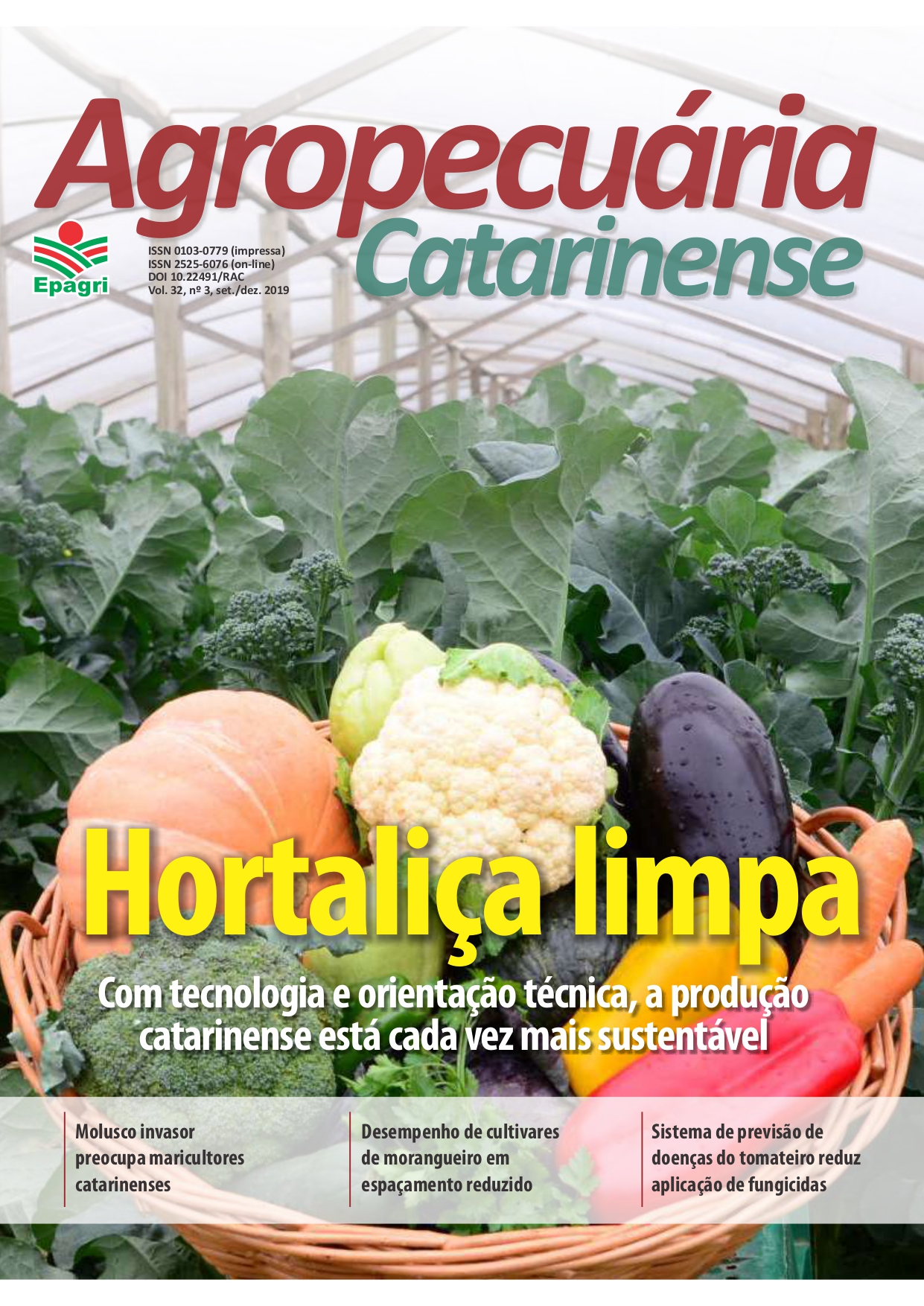Efficacy of insecticides for control of olive leaf moth Palpita forficifera (Lepidoptera: Crambidae) in laboratory
DOI:
https://doi.org/10.22491/RAC.2019.v32n3.9Keywords:
Olea europaea L., chemical control, crop protection.Abstract
The olive leaf moth Palpita forficifera Munroe (Lepidoptera: Crambidae) is a serious pest in Brazilian olive groves, and can cause severe yield losses if not managed properly. Due the scarcity of information and alternatives for management of this species, this study aimed to evaluate the efficacy of insecticides against P. forficifera in laboratory. The insecticides evaluated were spinetoram, lambda cyhalothrin + chlorantraniliprole, chlorantraniliprole, thiamethoxam + lambda cyhalothrin, lufenuron and Bacillus thuringiensis. Leaves of Ligustrum lucidum were immersed for three seconds in the insecticides’ solutions and offered to third instar larvae after drying. For each treatment, five Petry dishes with eight larvae were used. Mortality was recorded at 24, 48 and 72h after larvae exposure. The neurotoxic insecticides spinetoran, lambda cyhalothrin + chlorantraniliprole and thiamethoxam + lambda cyhalothrin caused mortality rates superior to 56% at 24h, while chlorantraniliprole, lufenuron and B. thuringiensis had a slower effect, with gradual increase in mortality from 48h. Lufenuron caused mortality of 63.3% at 72h, below the minimum efficiency of 80% required for pest control. Spinetoran, lambda cyhalothrin + chlorantraniliprole, thiamethoxam + lambda cyhalothrin, chlorantraniliprole and B. thuringiensis showed effectiveness in the control of P. forficifera larvae, with cumulative mortality at 72h ranging from 82.5 to 100%, and are useful options for control of this pest in olive groves.Metrics
Publication Facts
Reviewer profiles N/A
Author statements
- Academic society
- Epagri - Revista Agropecuária Catarinense
- Publisher
- Empresa de Pesquisa Agropecuária e Extensão Rural de Santa Catarina - Epagri





